In recent years, rainfall has been decreasing significantly. What is more, the air temperature has increased by 1.5 °C to 2 °C above the long-term average. All across Europe, there have been extremely dry and hot springs and summers which have taken their toll on the vast majority of lawns. Is there a way to save a dry, destroyed lawn without having to completely replant it?
It all depends on the condition of the lawn. If there are only several dry spots, you can carry out small repairs by reseeding the lawn. However, if more than half of the lawn is completely dry, then it is advisable to carry out a complete lawn regeneration.
The best time to do so is the second half of August and the whole of September. By then, the temperatures have already started to drop, it rains more frequently, and the humidity is higher, but the soil is still warm enough to ensure proper seed growth to take place without any issues. Also, there is plenty of time for the lawn to grow and gain strength before winter. In spring, the lawn will have a better starting position, will be less susceptible to diseases and pests and will turn green much sooner. September is a good month for reseeding the lawn, either locally or completely, as well as establishing a completely new lawn.
How to repair a dry lawn in 10 steps:
1. Start by cutting the lawn to a very low height of up to one centimeter. It is vitally important in order to ensure faster regeneration and because of the following steps. Dry grass blades can no longer grow by their own.
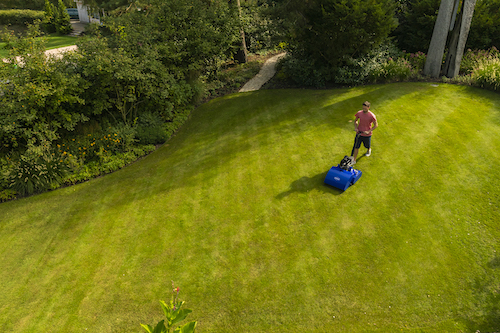
2. Next, proceed to verticutting. Ideally, verticutting should be carried out in two directions (in a cross). If the soil is too dry, water the lawn the day before so you don’t ruin your mower with a
verticutting cartridge or your verticutter.

3. If you own a Swardman mower, use the
scarifier cartridge to clean the lawn from all excess material. If you don’t own a scarifier, a Swedish rake will do the job. Add the excess material to your compost heap.

4. Proceed to reseeding the dry spots. However, it is best to reseed the entire lawn using a handheld seed spreader. Use the grass seed mixture that was originally used to create the lawn.
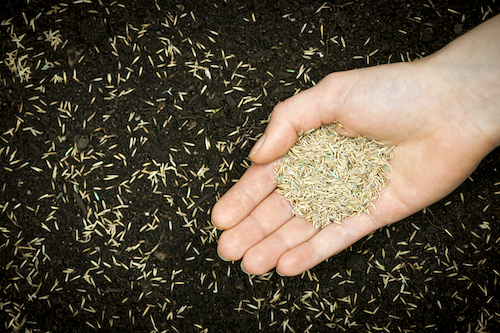
5. Based on exactly why you regenerate your lawn, fertilize it with a long-acting organic-mineral fertilizer. In August and early September, you should also apply a seasonal nitrogen fertilizer. From mid-September onwards, use an autumn fertilizer with a higher potassium content.
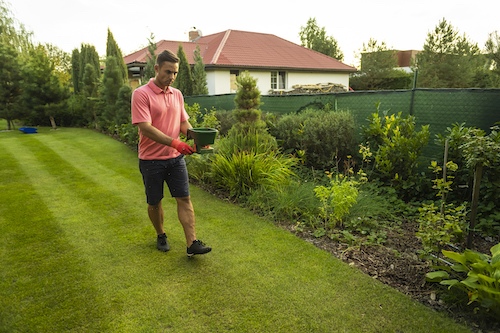
6. For the seeding or reseeding to be effective, the seeds must not be left lying on the soil. Make sure you have plenty of fine packaged grass substrate which you should spread loosely in a thin layer (approx. 0,5-1 cm) on the lawn. One 50 kg pack should be enough for about 10 m2. Caution: the use of sand for the top layer is inadvisable due to rapid drying and slow seed germination. If you have the option to do so, use a roller or drive over the lawn with a reel mower on rollers. This method can also be used to smoothen out holes and unevenness in the lawn.

7. Now it is time for proper irrigation. If you are going to irrigate your lawn by hand with a hose, beware of a strong current that could “wash out” your carefully planted seeds, causing the lawn to grow unevenly.
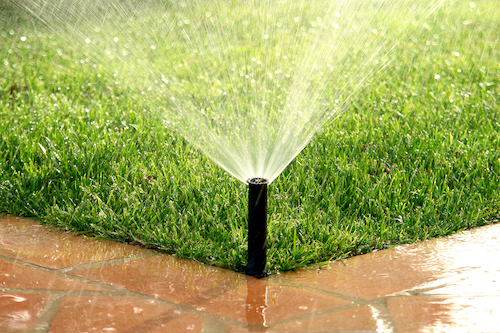
8. At this point, the lawn requires proper attention – the substrate should not be allowed to dry out. Ideally, it should be kept moist at all times, but never wet. This ensures that the seeds germinate quickly.
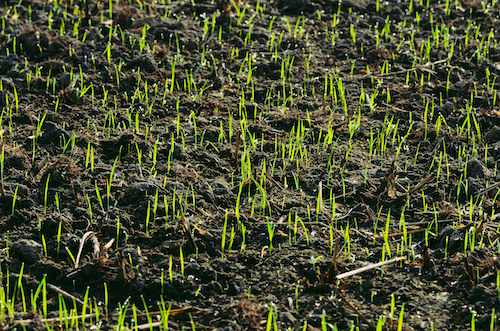
9.
Depending on weather, irrigation and grass mix type, the grass should germinate within 1-3 weeks. During that time, do not walk on the lawn and make sure your pets do not do so either.

10. Do not rush the first mowing. Wait for the lawn to grow to the height of approx. 8 cm. Remember to follow the rule of 1/3, i.e., always cut the grass by the maximum of 33% of its height. A reel mower, thanks to the roller fitted in the back, will roll and level the lawn. In the front, you can fit wheels for tall grass. If you are going to mow the lawn with a rotary lawn mower on wheels, try not to push the machine into the lawn too much to avoid making grooves in the grass. Also, make sure that the blade is properly sharpened.











